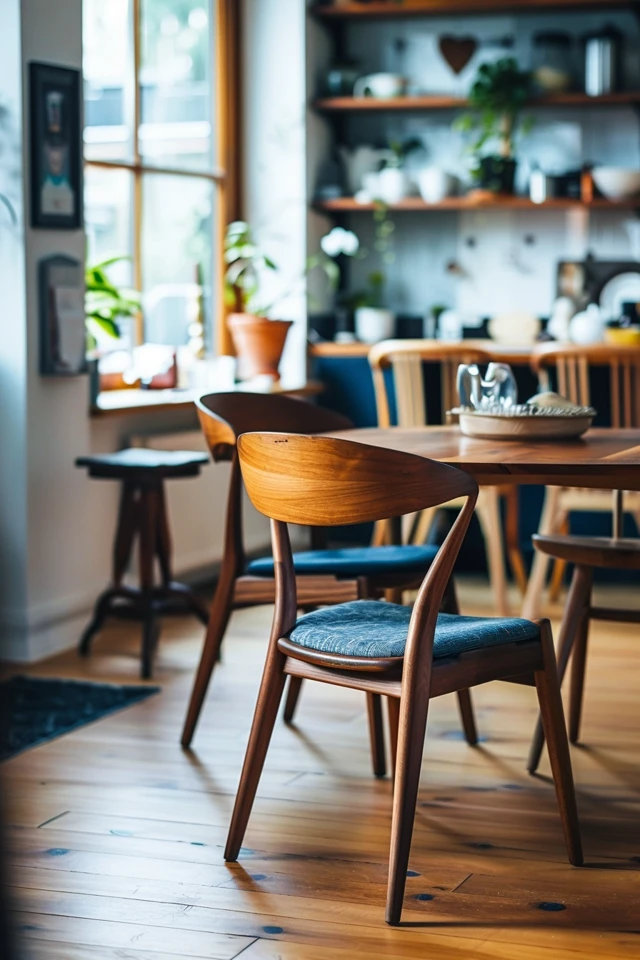Removing chewing gum from wood furniture can be a sticky situation, but with the right techniques, you can easily remove the gum and keep your wood surfaces looking impeccable. There’s no need to panic when you discover a gum stain on your favorite wooden table or chair. Follow these simple steps, and you’ll have your furniture gum-free in no time.
First, try using ice cubes to freeze the gum. Place a few ice cubes in a plastic bag and hold it against the gum until it hardens. This will make it easier to scrape off without damaging the wood. Alternatively, you can rub the gum with a cloth soaked in vegetable oil. The oil helps to dissolve the sticky residue, allowing you to wipe it away effortlessly.
If the gum is particularly stubborn, you can use duct tape to lift it off the surface. Press the sticky side of the tape onto the gum and peel it away, repeating the process until the gum is completely removed. Another unconventional but effective method is to dab the gum with peanut butter. The natural oils in peanut butter help break down the gum, making it easier to remove.
In some cases, scraping the gum off with a blade may be necessary. Use a plastic or wooden scraper to gently lift the gum off the wood surface. Take care not to scratch or gouge the wood. If there is any residue left behind, you can apply a chemical cleaner specifically designed for wood surfaces. Be sure to follow the instructions carefully and use a clean cloth to wipe away any remaining residue.

Key Takeaways:
- Freezing the gum with ice cubes or rubbing with vegetable oil can help loosen the gum from the wood.
- Using duct tape or peanut butter can be effective in removing stubborn gum stains.
- Scraping the gum off with a plastic or wooden scraper may be necessary for tougher stains.
- Always test any cleaning solution on a small, inconspicuous area before applying it to the entire surface.
- Regular maintenance and cleaning of wood furniture will help prevent gum stains and keep the surfaces looking their best.
Tips for Removing Chewing Gum from Wood Furniture
When it comes to removing chewing gum from wood furniture, following a few simple tips can make the process easier and help ensure the best results. Whether it’s a sticky residue or a stubborn gum stain, these tips will guide you through the cleaning process and leave your wood surfaces looking pristine.
1. Start with Ice Cubes
The first step in removing chewing gum is to freeze it. Take a couple of ice cubes and press them against the gum for a few minutes. This will harden the gum, making it easier to peel off the wood surface. You can use a plastic scraper or your fingernails, but be gentle to avoid scratching the wood.
2. Rub with Vegetable Oil
If the gum doesn’t come off completely with the ice method, try rubbing it with vegetable oil. Apply a small amount of oil to a clean cloth and gently rub the gum in a circular motion. The oil will help break down the gum’s stickiness, making it easier to remove. Once the gum is fully loosened, wipe away any residue with a clean cloth.

3. Use Duct Tape
Another effective method for gum removal is using duct tape. Cut a small piece of duct tape and press it firmly onto the gum. Slowly lift the tape, pulling the gum along with it. Repeat this process until all the gum is removed. If any sticky residue remains, proceed to the next step.
4. Remove Sticky Residue
If there is still sticky residue remaining on the wood surface, you can use a mild chemical cleaner or a mixture of warm, soapy water to clean it. Apply the cleaner or soapy water to a soft cloth and gently rub the affected area. Be sure to test the cleaning solution on a small, inconspicuous area first to ensure it doesn’t damage the wood. Once the residue is gone, wipe the area clean with a damp cloth and dry it thoroughly.

Maintaining Wood Surfaces After Gum Removal
Now that you have successfully removed the gum from your wood furniture, it is crucial to maintain the wood surfaces to keep them looking their best. A few simple steps can help ensure the longevity and beauty of your hardwood furniture.
If there are any scratches or holes resulting from the gum removal process, I recommend using a high-quality wood filler to repair them. This will help restore the smoothness of the surface and prevent any further damage. Once the filler has dried, gently sand the area with a fine-grain sandpaper to achieve a seamless finish.
After sanding, it’s time to apply a wood oil. A wood oil not only provides protection against everyday wear and tear but also enhances the natural beauty of the wood. Apply the wood oil following the manufacturer’s instructions, making sure to cover the entire surface evenly. Allow the oil to penetrate the wood for the recommended duration before wiping off any excess.
To complete the maintenance process, consider polishing your furniture with a high-quality furniture polish or wax. This will not only provide an extra layer of protection but also enhance the luster of the wood. Regular dusting and cleaning with a soft, lint-free cloth will help maintain the furniture’s appearance and prevent the accumulation of dirt and grime.

